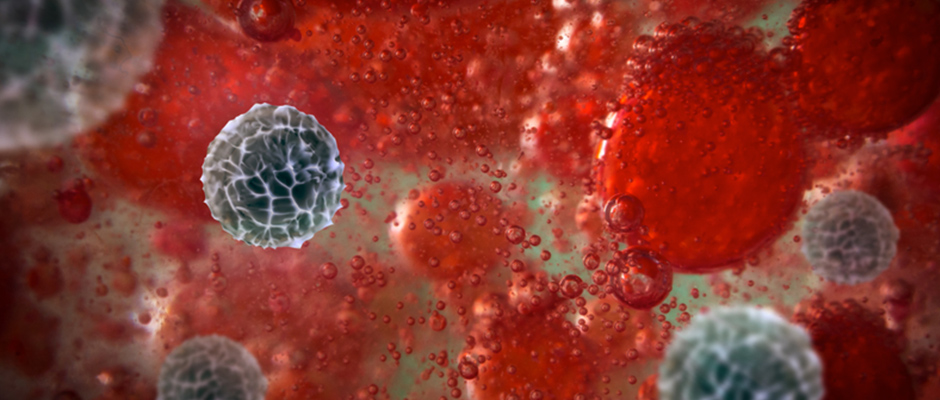T-Cell Dysfunction May Worsen Endometriosis
Jun 17, 2017
Regulatory T cell dysfunction linked to the development of endometriosis-like lesions
Key Points
Highlights:
- Researchers from the Kyoto Prefectural University of Medicine have found that T regulatory lymphocytes (Treg) may be involved in the formation of the chronic inflammatory environment involved in endometriosis.
Importance:
- Understanding the role of immune cells on the inflammatory microenvironment of endometriotic lesions may yield future clinical treatments to slow down or prevent the spread of endometriosis.
- Studies that aim to elucidate and delineate the complex immunologic environment of endometriotic lesions are required to determine the influence of the immune system on its development.
- The development growth regulation and differentiation of T regulatory lymphocytes (Treg cells) are organized by a transcription factor called Foxp3 (Forkhead box 3 protein).
What’s done here?
- Three Treg cell fractions (resting Treg, activated Treg, and non-Treg cells) were assessed using flow cytometry in varying tissues surgically collected from 55 women with (27 patients) and without (37 patients) endometriosis including endometrium, peritoneal fluid, peripheral blood and ovarian endometrioma.
- A mouse model was also used to temporarily deplete Foxp3 (hence Treg cells) in the mice to observe the regulation of endometriosis in vivo.
Key Results:
- The percent of activated Treg cells in the eutopic endometrium (1.5%) and endometriosis tissue samples (2.6%) from endometriosis patients were significantly lower than endometrium of women without endometriosis (8.9%).
- No significant differences were found in the total Treg cell population among the endometrium in ovarian endometriosis patients compared to the endometrium of normal patients and in different time points of the menstrual cycle.
- Peripheral blood and peritoneal fluid did not show any significant differences among Treg cell subpopulations in patients with or without endometriosis.
- The ratio of activated macrophages, which also contribute to inflammation, in these endometriosis-like lesions was significantly higher than that of mice that did not have endometriosis.
Lay Summary
Researchers from the Kyoto Prefectural University of Medicine, Japan, have found that T regulatory lymphocytes (Treg) may be the reason for the formation of the chronic inflammatory environment involved in endometriosis, a study published in The Journal of Clinical Endocrinology & Metabolism.
Tissue samples were surgically collected from 55 women with (27patients) or without (28patients) endometriosis and included ovarian endometrioma, endometrium, peritoneal fluid, and peripheral blood. Using flow cytometry and other molecular methods, researchers compared the immunologic profile of three different Treg cell subpopulations, namely resting (naïve), activated Treg, and non-Treg cells and the immune profile was assessed.
A mouse model of endometriosis visualized by green fluorescent protein was also applied, and temporary depletion of Foxp3 (hence Treg cells) was used in order to observe the regulation of endometriosis in vivo. Immune cell composition of mice tissues was also analyzed via flow cytometry. Endometriosis-like lesions were reportedly observed and subsequently evaluated histopathologically and by IHC to ensure that lesions that were seen were originally from the endometrium.
The percentage of Treg cells in endometriosis patients in their endometrium and ovary were 1.5% and 2.6%, respectively; compared to the endometrium (8.9%) in normal patients. No significant differences were found in the total Treg cell population among these three tissue types. Human samples collected from the peripheral blood and peritoneal fluid also did not show any significant differences among Treg cell subpopulations. However, once FoxP3 was temporarily depleted, the mice presented a drop in the ratio of Treg cells in the endometriosis-like lesions. The ratio of activated macrophages in these endometriosis-like lesions was significantly higher than that of mice that did not have the endometriosis.
This study provides supporting data on the theory that a pro-inflammatory environment may exacerbate endometriosis growth. Interestingly, Treg cells have been seen to be closely tied to the formation and maintenance of tumor microenvironments in many cancer types. These results may also coincide with clinical evidence that many women with endometriosis also present with other autoimmune disorders such as systemic lupus erythematosus, Sjögren's syndrome, and rheumatoid arthritis.
Research Source: https://www.ncbi.nlm.nih.gov/pubmed/28575420
immune cell T cell endometriosis inflammation Treg resting activated flow cytometry Foxp3 cytokines

